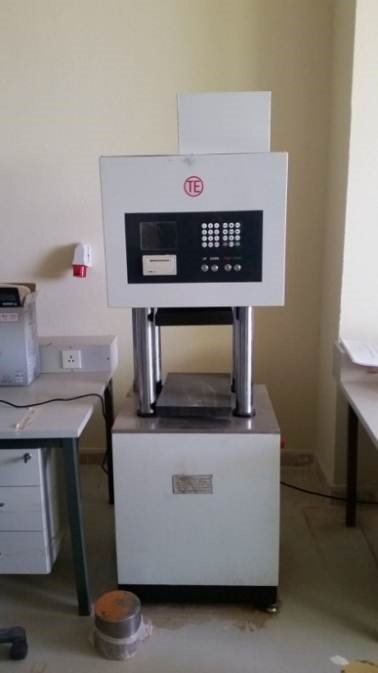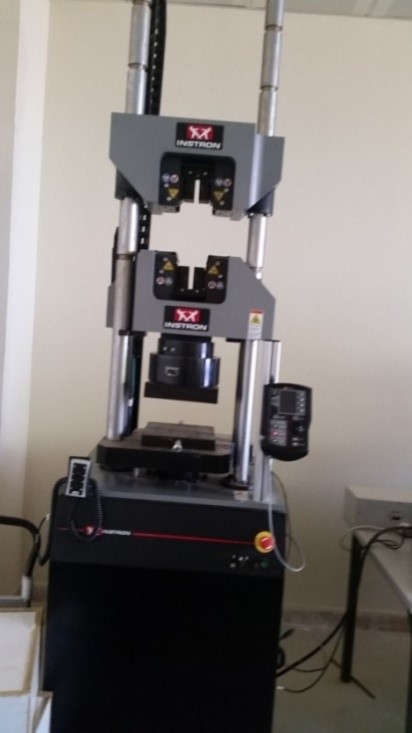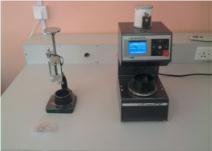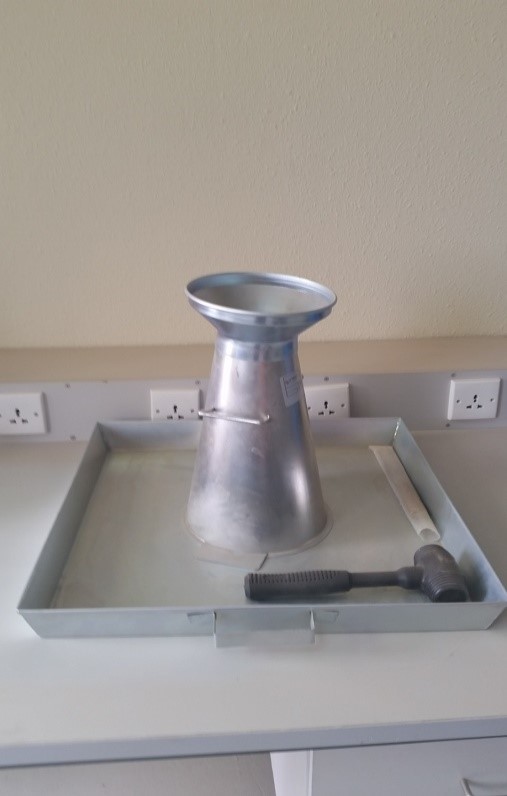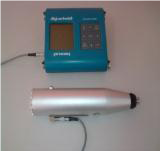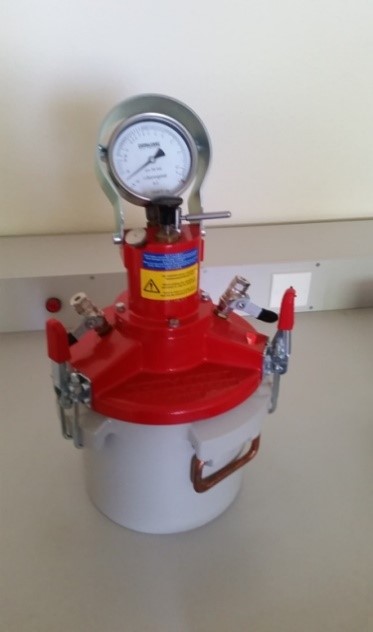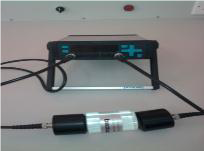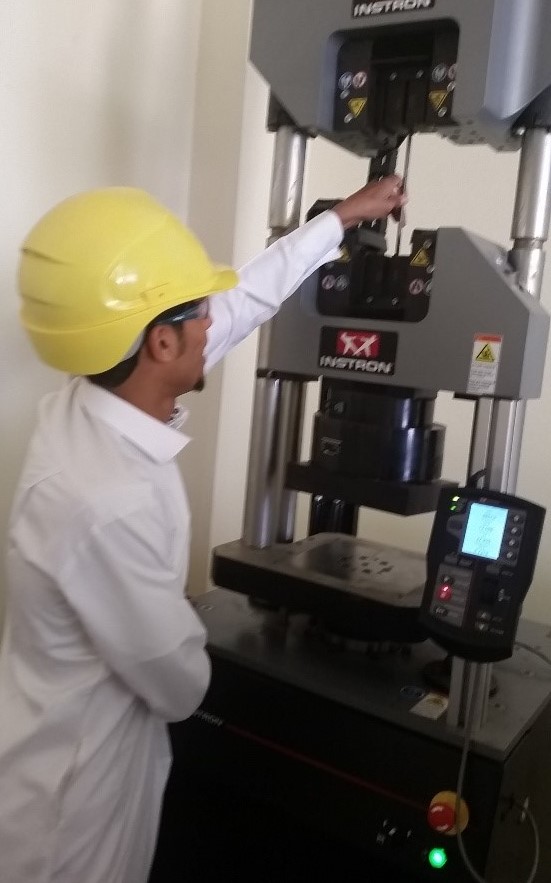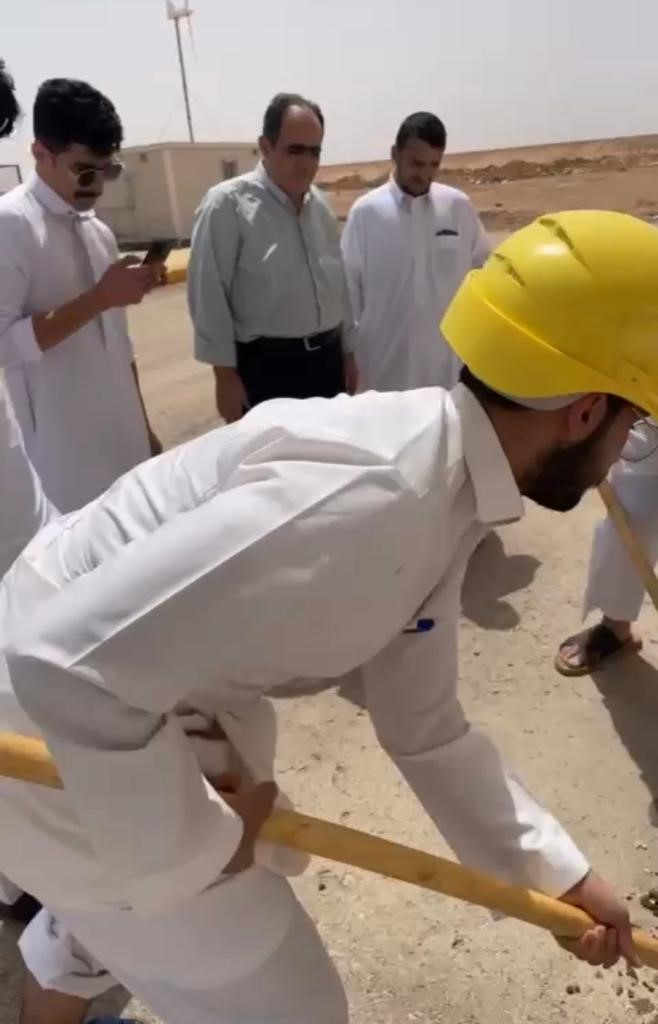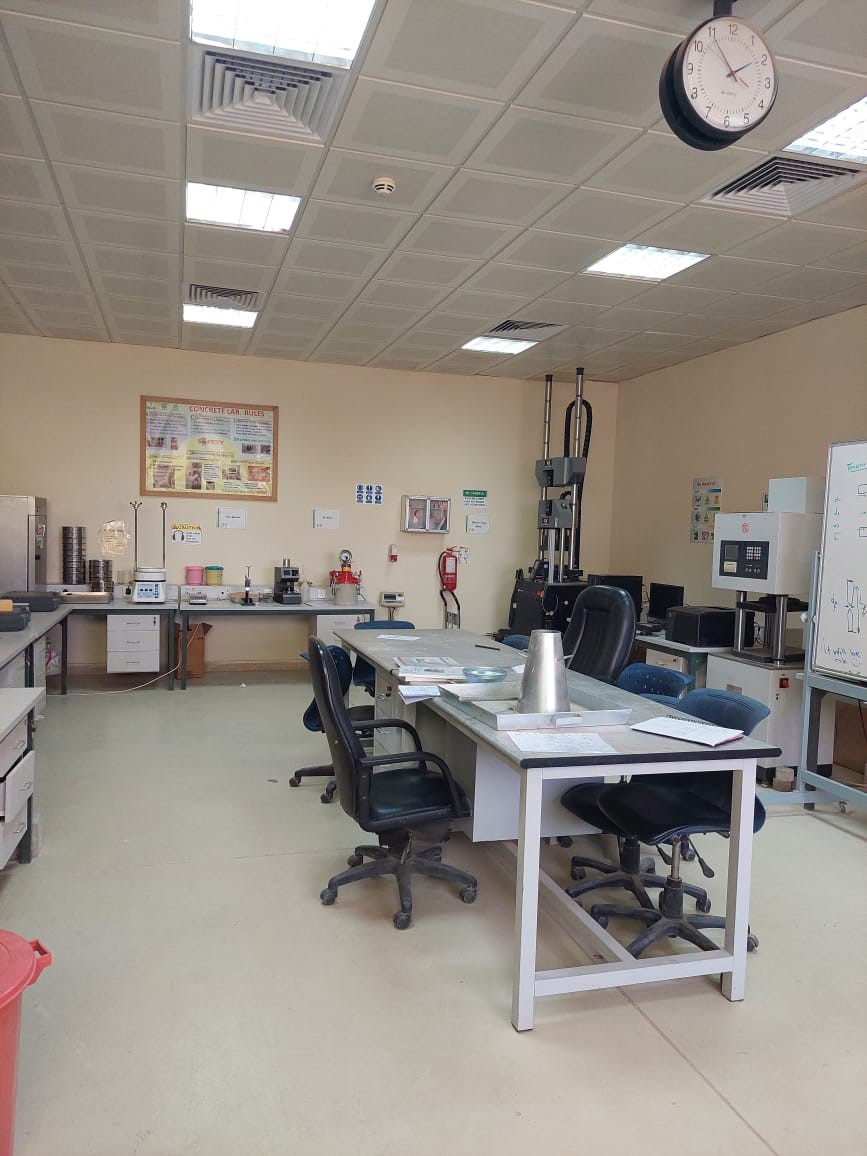The concrete technology laboratory aims to determine the properties of construction materials. The laboratory supports teaching of the materials of construction course (1401340) and advanced construction materials course (1401443(. The Concrete Technology lab is equipped with many machines and apparatus that are listed in Table (1) for performing tests on metals, cement, aggregate, fresh concrete, hardened concrete and wood. Through this laboratory, students become familiar with commonly used construction materials and their respective quality control according to the standards.
There are various lab tests performed on construction materials in the field of civil engineering to ensure their quality, durability, and safety. Here are some of the commonly performed tests:
Aggregates Testing:
- Sieve Analysis: Determines the particle size distribution for coarse and fine aggregates.
- Aggregate Crushing Value (ACV) Test: Measures the ability of an aggregate to resist crushing under a gradually applied compressive load.
- Aggregate Impact Value (AIV) Test: Measures the resistance of an aggregate to sudden shock or impact.
- Los Angeles Abrasion Test: Measures the abrasion resistance and durability of aggregates.
Concrete Testing:
- Slump Test: Measures the consistency of fresh concrete before it sets.
- Compressive Strength Test: Determines the strength of hardened concrete.
- Splitting Tensile Strength Test: Determines the tensile strength of concrete.
- Flexural Strength Test: Determines the flexural strength of concrete.
Cement Testing:
- Fineness Test: Measures the size of cement particles.
- Standard Consistency Test: Determines the quantity of water required to produce a cement paste of standard consistency.
- Setting Time Test: Measures the time for cement to start setting and completely harden.
- Compressive Strength Test: Determines the compressive strength of cement.
Steel Testing:
- Tensile Test: Measures the resistance of a material to a force tending to pull it apart.
- Bend Test: Determines the ductility or resistance to fracture under bending of steel.
- Rebend Test: Checks whether the steel can withstand the effect of bending and rebending.
- Chemical Analysis: Determines the percentage of different elements used in the steel.
These tests are performed according to the American Society for Testing and Materials (ASTM) standards.
Contents of Concrete Technology Laboratory
Instruments, Equipment’s & Tools | Items # |
|---|---|
Universal Testing Machine | 1 |
Compression Testing Machine | 2 |
Aggregate Sieves set | 3 |
Sieve Shaker | 4 |
Digital Concrete Test Hammer | 5 |
Concrete Test Hammer (NR) | 6 |
Ultrasonic pulse velocity Apparatus | 7 |
Digital Rebar Detection | 8 |
Automatic Recording Vicat Apparatus | 9 |
Vicat Apparatus | 10 |
Slump Cone | 11 |
Compacting Factor Apparatus | 12 |
Fresh Concrete Tester | 13 |
Air Meter | 14 |
Concrete Mixer | 15 |
Mortar Mixer | 16 |
Digital Balance 1000gm | 17 |
Digital Balance 10 Kg | 18 |
Digital Balance 60.0 kg | 19 |
Cubic Molds (150x150x150) mm | 20 |
Cylindrical molds (150 x 300) mm
| 21 |
Cylindrical molds (100 x 200) mm | 22 |
Cubic Molds (50x50x50) mm | 23 |
Digital Thermometer | 24 |
Curing Tank | 25 |
Drying Oven | 26 |
Vibration Table | 27 |
Protection Safety equipment | 28 |
Lifting Table trolley 150 Kg | 29 |
Digital Stop Watch | 30 |
Concrete Pocket Penetrometer | 31 |
Cordless Hammer Drill | 32 |
Digital platform 150.0 kg | 33 |
Caliper | 34 |
Measuring Lens | 35 |
Photo Gallery
Compression Testing Machine | Universal Testing Machine |
Vicat Apparatus | Sieves and Mechanical Sieve Shaker |
Compaction Factor Test Apparatus | Slump Cone |
Digital Concrete Test Hammer | Air Meter |
Concrete Mixer | Ultrasonic pulse velocity Apparatus |
| |
Experiments
Experiment No. 1: Tension Test of Steel and Aluminum
Purpose:
This experiment is used to:
- Determine the yield strength.
- Determine the tensile strength.
- Determine the modulus of elasticity.
- Determine the max. strain.
- Draw the stress – strain relationship.
- Determine the reduction of cross-sectional area of the specimen.
Instruments and Equipments:
- Universal testing machine.
- Extensometer.
- Caliper.
- Determine the particle size distribution of fine and coarse aggregate by dry sieving.
Experiment No. 2: Sieve Analysis of Fine and Coarse Aggregates
Purpose:
This experiment is used to:
- Draw the particle size distribution curve of fine and coarse aggregate.
Instruments, Equipment’s:
- Balances or scales.
- Sieves Set
- Mechanical sieve shaker
- Oven.
Experiment No. 3: Normal Consistency and Setting Time of Cement
Purpose:
This experiment is used to determine the normal consistency and the setting time of cement.
Instruments, Equipment’s:
- Balances or scales.
- Vicat Apparatus.
- Digital Stop Watch
Experiment No. 4: Slump of Portland Cement Concrete
Purpose:
This experiment is used to determine the slump of fresh concrete.
Instruments, Equipment’s:
- Slump cone.
- Tamping rod.
- Digital Stop Watch.
- Digital Thermometer
Experiment No. 5: Compacting Factor test
Purpose:
This experiment is used to determine the workability of fresh concrete.
Instruments, Equipment’s:
- Compaction factor apparatus.
- Tamping rod.
- Balances or scales
Experiment No. 6: Air Content of Freshly Mixed Concrete by Pressure Method
Purpose:
This experiment is used to the determine Air Content of Fresh Concrete by Pressure Method
Instruments, Equipment’s:
- Air meter.
- Trowel.
- Tamping rod.
- Mallet
Experiment No. 7: Initial Setting Time of Concrete Mixtures by Penetration Resistance
Purpose:
This experiment is used to determine initial setting time of concrete mixtures by Penetration Resistance
Instruments, Equipment’s:
- Containers for mortar specimens.
- Concrete Pocket Penetrometer
Experiment No. 8: Compressive Strength of Hardened Concrete.
Purpose:
This experiment is used to determine the compressive strength of Portland cement hardened concrete specimens.
Instruments, Equipment’s:
- Compression testing machine.
- Vibration table.
- Concrete mixer.
- Tamping rod.
- Balances or scales
- Mixing tools.
- Cylindrical molds (150 mm x 300 mm).
- Cylindrical molds (100 mm x 200 mm).
- Cubic Molds
- Curing Tank
- Lifting Table trolley 150 Kg
Experiment No. 9: Rebound Number of Hardened Concrete
Purpose:
This experiment is used to determine the rebound number of hardened concretes
Instruments, Equipment’s:
Concrete Test Hammer (NR) or Digital Concrete Test Hammer.
Experiment No. 10: Pulse Velocity Through Concrete
Purpose:
This experiment is used to determine the Pulse Velocity through the hardened Concrete
Instruments, Equipment’s:
Ultrasonic pulse velocity Apparatus

